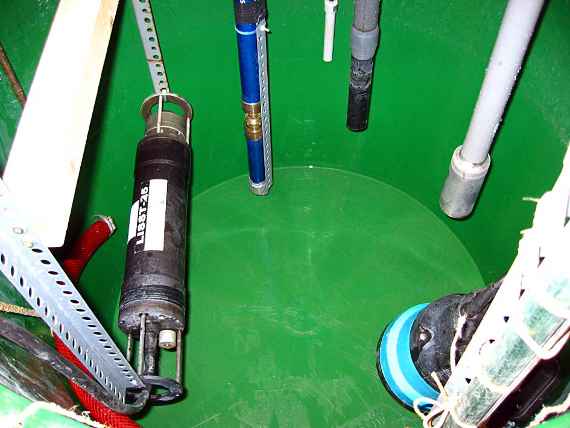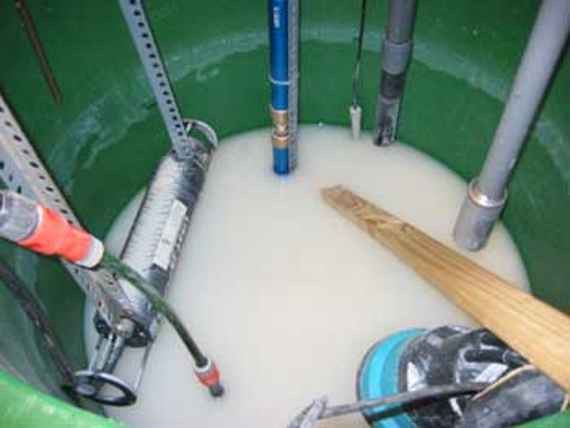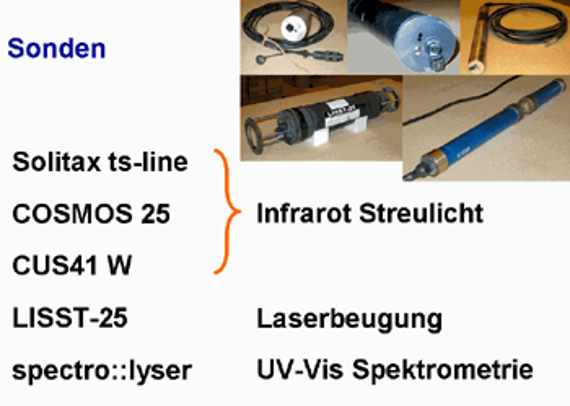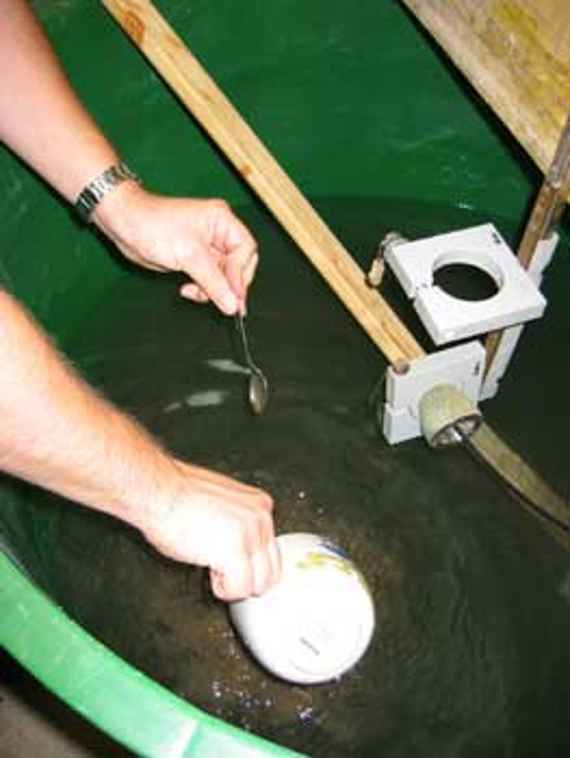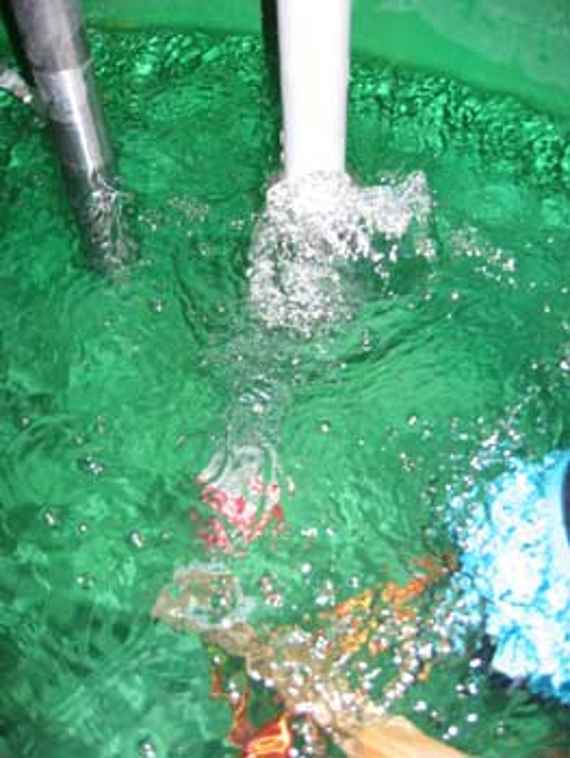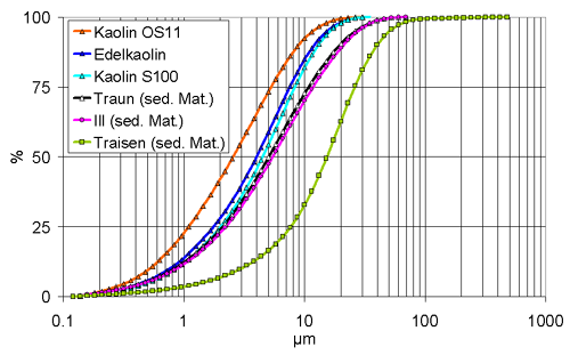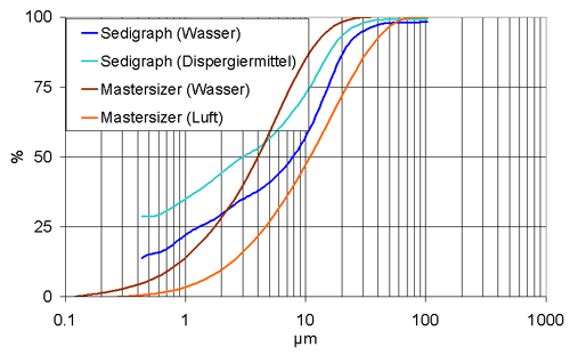Under laboratory conditions, various devices available on the market for measuring suspended solids in flowing waters were tested. The correlation between the device display and the actual suspended solid content in the water including measurement uncertainty was determined (= calibration).
Additional investigations dealt with disturbing factors that can influence the measurement results (exempli gratia air bubbles, fish, water temperature).
Project content
CUSTOMER: VERBUND Austrian Hydro Power AG and the Federal Ministry of Agriculture, Forestry, Environment and Water Management, Department of Water Resources Management
PROJECT PARTNERS: University of Natural Resources and Applied Life Sciences, Institute of Water Management, Hydrology and Hydraulic Engineering
The recording of suspended solids transport in flowing waters is important for many areas (extent of soil erosion in the catchment area, silting up of reservoirs and lakes, sedimentation in floodplains, pollutant loads, environmental effects of reservoir flushing).
Individual water samples from the water body that are examined for suspended solids content are usually too few. A continuous measurement of the suspended solids content is necessary. This continuous measurement is carried out via the turbidity of the water. From the turbidity of the water the suspended solid content is deduced. There are several manufacturers who offer devices for suspended solids measurement. Comparative measurements with different devices and measuring methods showed great differences. Their causes are not known.
Reliable devices are required for practical measuring applications. For data interpretation, the measurement uncertainty of the instrument must be known (how accurately can the suspended solids content be measured?). A reliable comparison of measuring instruments can only be made under defined laboratory conditions. This is the only way to guarantee that the same boundary conditions prevail for all measuring instruments. If necessary, it is easy to reproduce the boundary conditions (for example, the suspended solids content of water with a certain material). A comparative study at a running water is only possible to a limited extent, as the concentration of suspended solids is variable both in time and in place. A reproduction of the measurement conditions is practically impossible.
This resulted in the following project objectives:
- Determination of the correlation between suspended solids concentration and measuring instrument display.
- Comparability of the measurement results of different suppliers of measuring instruments.
- Identification of the influence of grain size.
- Examination of possible disturbances of the measuring results and influence of transient conditions.
-------------------------------
Project schedule
The investigation methodology was based on 2 guidelines
- clearly defined framework conditions (uniform process and analysis)
- Reproducibility (laboratory conditions)
Container with the measuring instruments.
To ensure that all measurements are comparable and, if necessary, reproducible, commercial kaolin with defined particle size distributions is used as suspended matter. The suspension, consisting of kaolin and water, is produced in a 400 l container in which the measuring instruments are immersed.
Photos of the 5 probes used.
The probes were kindly provided by the companies free of charge for the time frame of the investigation.
Translation from German to English according to the picture:
Sonden = probes
Infrarot Streulicht = Infrared scattered light
Laserbeugung = Laser diffraction
UV-Vis Spektrometrie = UV-Vis spectrometry
Preparation of the suspension with natural suspended solids.
For comparison purposes, tests are also carried out with natural suspended solids. In parallel to this project, another one is running, in which the measurement methodology on flowing waters is investigated in detail. The laboratory investigations form a basis for the natural measurements.
Influence of air bubbles.
Interference during the measurement can influence and falsify the measurement results. The test with air bubbles, as they can occur in nature after waterfalls, for example, shows that measuring instruments register air bubbles as turbidity and thus indicate a suspended solids content even in clear water.
-------------------------------
Project results
a. Particle size analysis
A total of 6 different suspended solids were investigated. Three samples were obtained from material sedimented in the rivers Ill, Traisen and Traun. The particle size analyses with the MasterSizer 2000 (method "wet") were kindly provided by the company Prager Elektronik
A comparison of the same material (here precious kaolin) with different grain size analysis methods showed that the result is strongly dependent on the method used.
Conclusion practice: particle size data for suspended solids can only be compared if the same analytical method was used or at least the methods used are known.
b. Relationship between suspended solids content in water and measuring instrument display
The relationships between the actual suspended solids content and the observed instrument displays are shown graphically below. The thin lines show the band of measurement uncertainties in the laboratory tests. The dependence of the instrument display on the material used (suspended matter) is clearly visible. This is probably due to the fact that all methods are based on optical principles which cannot completely capture the actual grain shape (for example sphere or small plates) and thus the grain volume.
Deviations from the ideal line (45° line) are not a disadvantage as long as there is a functional relationship between the display and the suspended solids content. That is determined by calibration and is regularly checked during operation and adjusted if necessary. For measuring points lying on the 45° line, the measuring instrument display corresponds exactly to the actual suspended solids content. In this case, conversion of the measurement results using a calibration function is not necessary.
Conclusion for practice: The measurement of real suspended solids quantities is not possible without an instrument calibration. The measuring instrument must provide a functional correlation between the instrument display and the actual suspended solids content. Preference should be given to measuring instruments with the smallest possible uncertainty of measurement.
-
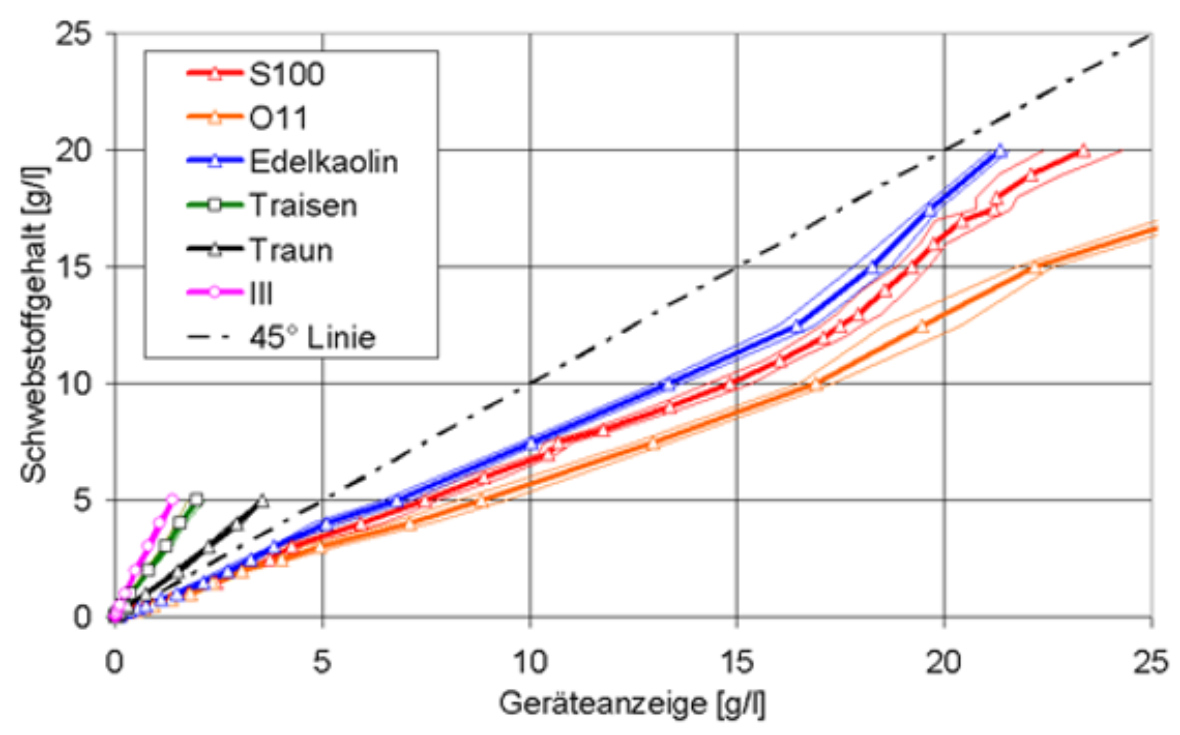
© Bittner zoom gallery -
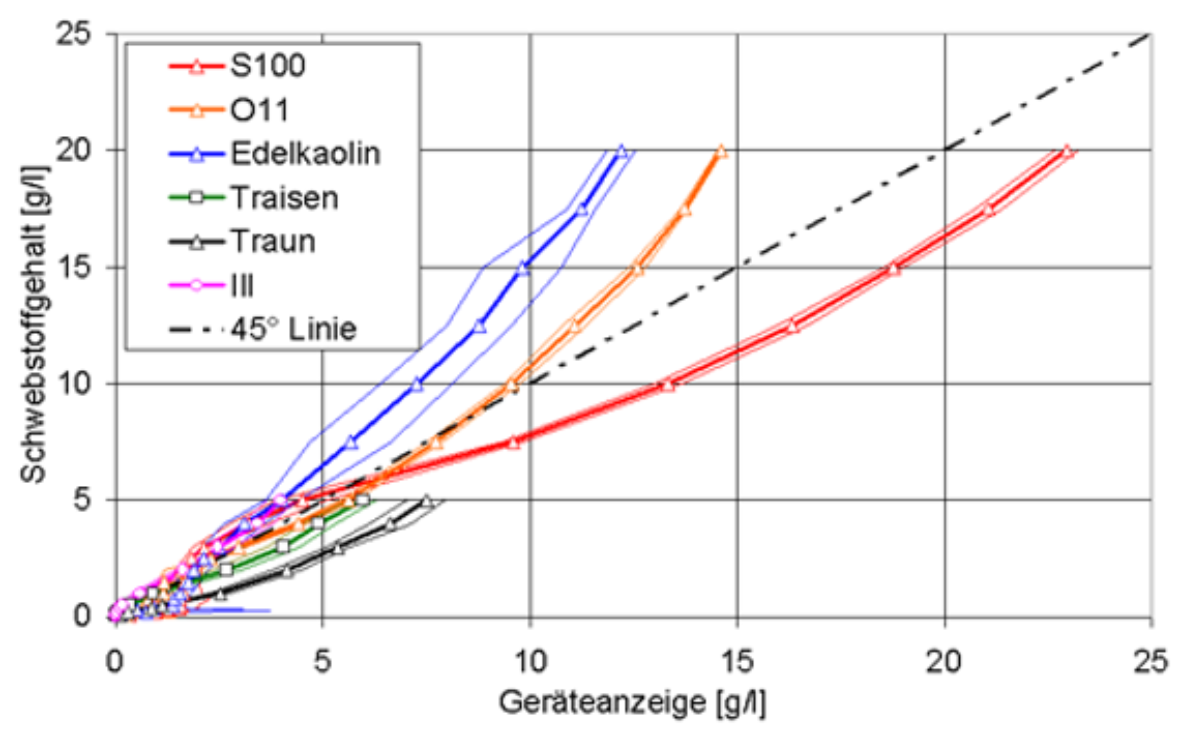
© Bittner zoom gallery -
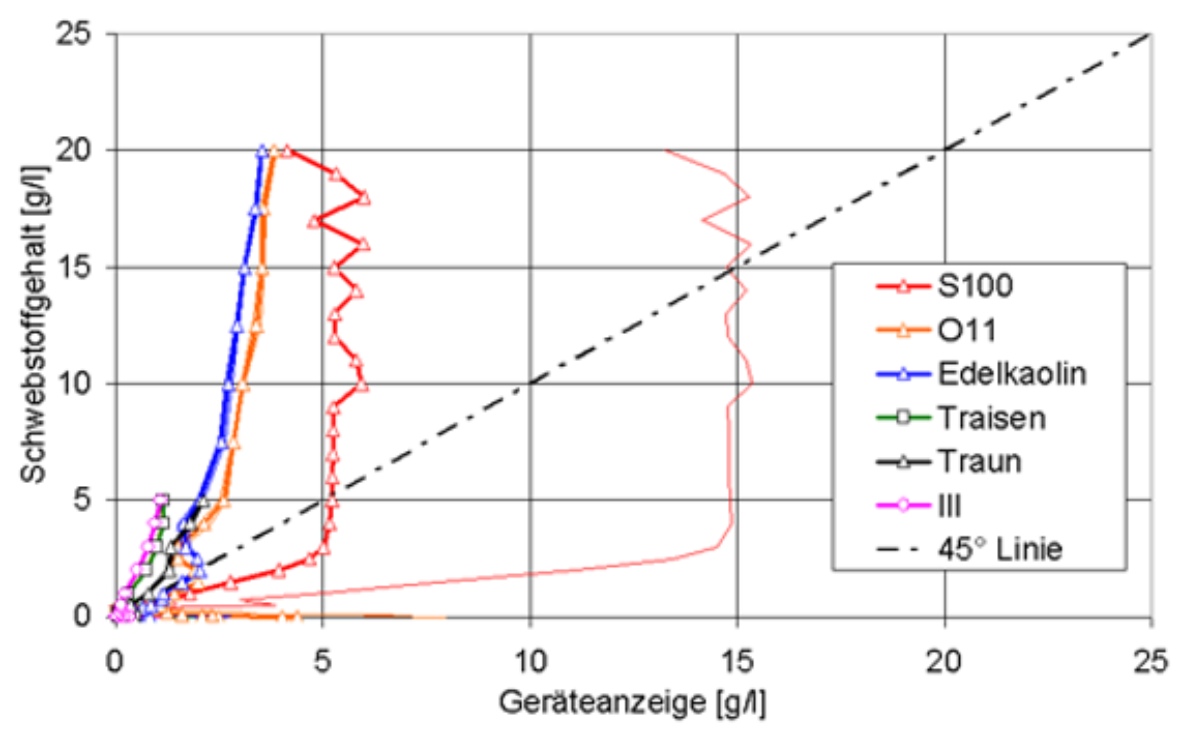
© Bittner zoom gallery -
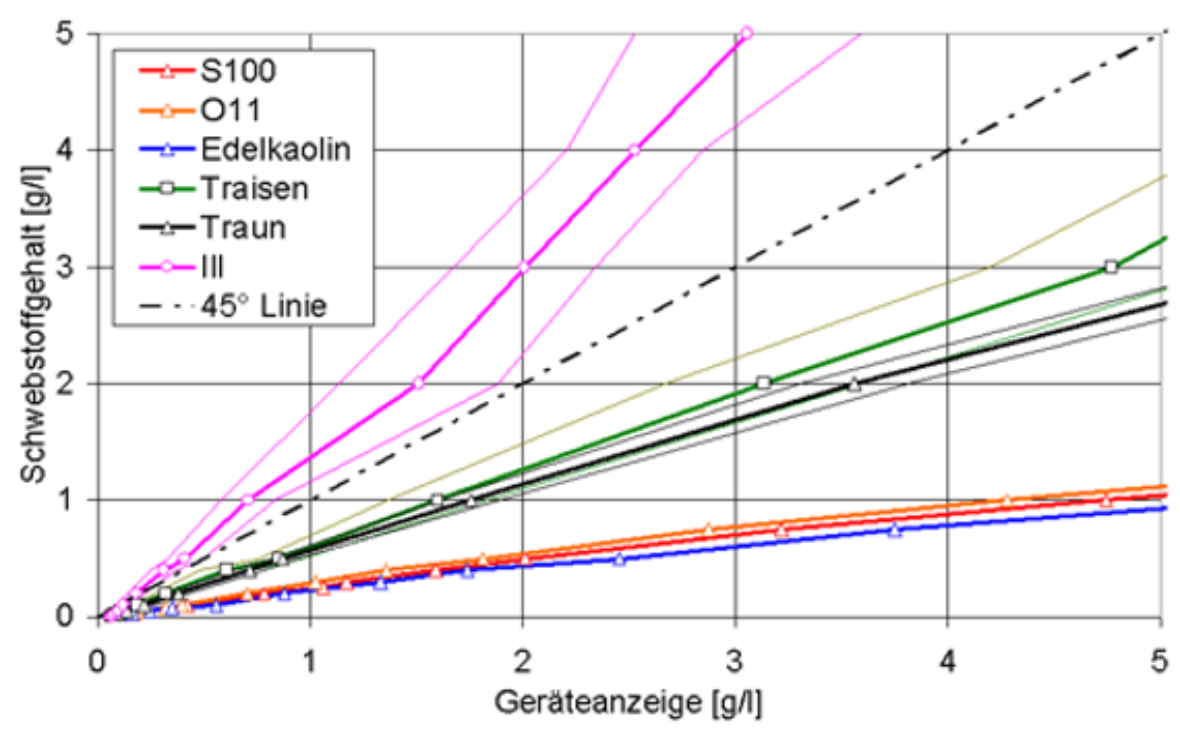
© Bittner zoom gallery -
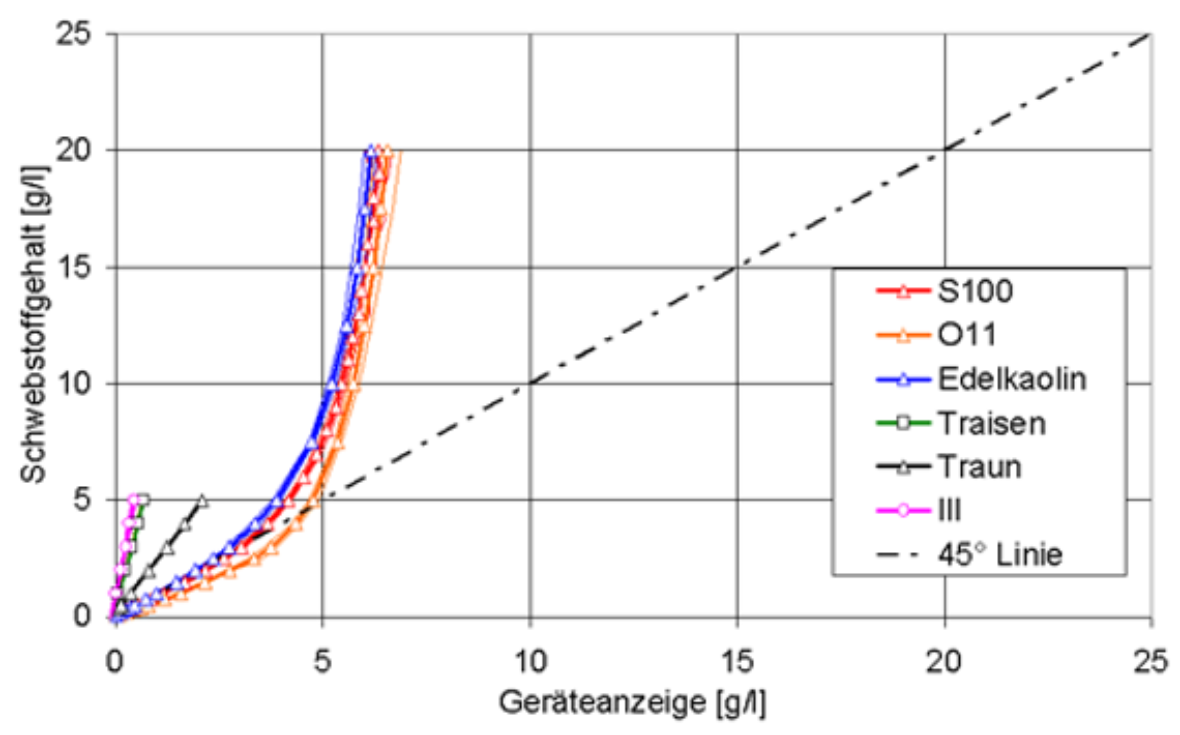
© Bittner zoom gallery
-------------------------------
The following possible interferences were examined:
- Change of water colour: No influence was detectable.
- Change in water temperature: In the examined range of 8 to 21°C no significant influence was observed.
- Air bubbles in the water: In pure water, air bubbles can irritate the measuring instruments and simulate suspended matter quantities of up to 1 g/l.
- Ambient light: The simulation of night or very high brightness had no influence on the measurement results.
- Bodies that come close to the probe: Only if bodies come within a few millimetres of the measuring sensor and remain there for several seconds the results are influenced.
Conclusion for practice: Air bubbles in the water can lead to high measurement results. This must be taken into account when selecting the measuring point and installing the probe.
-------------------------------
c) Summary
Turbidity probes are basically suitable for measuring suspended solids. Calibration tailored to the respective measuring application is indispensable. Without calibration, measurements of suspended solids quantities are not possible. There are significant differences between the various offers on the market, which must be taken into account individually, depending on the measurement conditions, when selecting the instrument. The functional relationship between the device display and the actual suspended matter content as well as the smallest possible measurement uncertainty must be taken into account.
A reliable cleaning system for the measuring sensor, supplemented by regular maintenance, is important for continuous operation in water. Practical experience has shown that a poorly maintained cleaning system not only does not work, but can also quickly re-contaminate the freshly cleaned measuring sensor (determined using the example of a wiper). Micro air bubbles on the sensor can also lead to malfunctions.
When selecting the measuring point and the arrangement of the turbidity probe in the watercourse, in addition to complete mixing (representative concentration at the measuring point for integration over the entire discharge cross section), the factors of falsification of the measured value by air bubbles, risk of pollution (physical, chemical and biological), maintenance possibilities and effects on the measuring point during flooding must also be taken into account.
Thanks to all the companies that have provided measuring instruments for this investigation free of charge.
Please contact us if you have any questions regarding the project or the practical use of turbidity probes.

